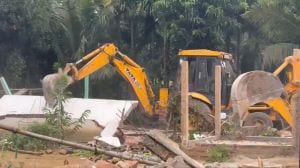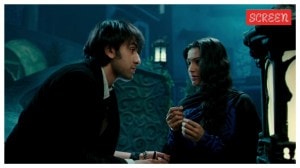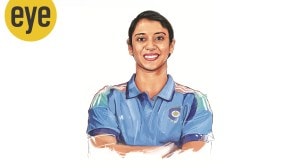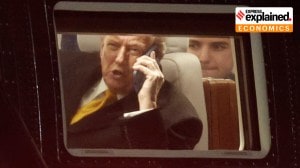Stay updated with the latest - Click here to follow us on Instagram
From space farming to celebrating Christmas: How Sunita Williams, Butch Wilmore spent 9 months away from earth
Sunita Williams and Butch Wilmore's months in space: This is how they spent these nine months away from the earth -- the only planet in our solar system known to support life.
 A videograb from the crew's Christmas message from space. (Video/X@NASA)
A videograb from the crew's Christmas message from space. (Video/X@NASA)National Aeronautics and Space Administration (NASA) astronauts Sunita Williams and Butch Wilmore are back on Earth after an unplanned nine-month stay in space. Their Crew 9 Dragon Spacecraft splashed down safely off the coast of Florida early on Wednesday morning. The space mission, initially designed as a short-term test of Boeing’s Starliner, got extended as Helium leaks and thruster malfunctions in the spacecraft rendered their return trip risky. NASA made the difficult decision to keep Williams, Wilmore and two other astronauts Don Pettit and Nick Hague, aboard the ISS indefinitely while engineers assessed the situation.
Now that the astronauts have returned after their extended stay at International Space Station (ISS), let’s have a look at how they spent these nine months away from the glitz and colours of earth — the only planet in our solar system known to support life.
Helping in space mission
Throughout their time in space, Williams, 59, and Wilmore, 62, kept on providing support in the ongoing space missions at the station. According to BBC, their tasks included repairing equipment that helms the station orientation, replacing a reflector device on an international docking adapter, and adding light filters on the NICER X-ray telescope.
Two spacewalks
It is in the mid-January that Williams ventured outside the ISS for the first time in the nine months. Along with fellow astronaut Hague, she performed some repairs on the craft. She again went out with Wilmore later that month. With this, Williams surpassed former astronaut Peggy Whitson’s total spacewalking time of 60 hours and 21 minutes on January 30.
NASA astronaut Suni WIlliams just surpassed former astronaut Peggy Whitson’s total spacewalking time of 60 hours and 21 minutes today. Suni is still outside in the vacuum of space removing radio communications hardware. Watch now on @NASA+… https://t.co/OD43nAlf5m pic.twitter.com/N5Mr0qQWJP
— International Space Station (@Space_Station) January 30, 2025
Experiencing 16 sunrises and sunsets
With the space station orbiting 250 miles (400km) above us 16 times a day, the crew were treated with a sunrise or sunset, every 45 minutes — adding up to 16 sunrises and sunsets everyday.
This also provided the astronauts a unique view of the Earth from the space. “It opens up the door to making you think a bit differently. It’s the one planet we have and we should be taking care of it,” BBC quoted Williams as saying. “There are so many people on Earth sending us messages it makes you feel right at home with everybody,” she had added.
Voting for US elections
The four astronauts, all Americans, onboard the ISS voted for the US elections last year from the outer space. However unusual it may sound, thanks to a special setup by NASA, it was, as Wilmore said, “very easy” for them to be included in the democratic process of the country.
For them to vote, Mission Control Center in Houston sent them an encrypted, password-protected ballot via email. The astronauts voted on their computers. Once completed, the ballot was securely beamed back to NASA’s White Sands Test Facility in New Mexico, from where it was forwarded to their local election office in Harris County, Texas.
Working out in zero gravity
Williams and Wilmore spent two hours or more exercising daily to fight the loss of bone density from living in zero gravity. “Your joints don’t hurt, which is quite nice,” BBC quoted Wilmore as saying. They used three different machines to help cope up with the effect of living in space: Advanced Resistive Exercise Device (ARED) for squats, deadlifts, and rows that work all the muscle groups; treadmills for which the crew members had to strap in to stop themselves floating away; a cycle ergometer for endurance training.
 Sunita Williams exercising on the Combined Operational Load Bearing External Resistance Treadmill (COLBERT) (Photo – NASA)
Sunita Williams exercising on the Combined Operational Load Bearing External Resistance Treadmill (COLBERT) (Photo – NASA)
Growing red romaine lettuce in microgravity conditions
Williams was also engaged in an unusual agricultural experiment aboard the ISS that was aimed at enhancing space farming techniques. This initiative was a part of NASA’s Plant Habitat-07 study that involved growing red romaine lettuce in microgravity conditions, reported The Daily Guardian. The study was to examine how various levels of moisture affect the microbial communities in plants and water. The experiment tried to observe and assess how less-than-ideal conditions impact plant growth.
‘Merry Christmas’ away from earth
Being stranded in space did not stop the NASA astronauts from celebrating Christmas. On the occasion, they posted a festive video message wishing their friends and family back on earth a merry Christmas.
To everyone on Earth, Merry Christmas from our @NASA_Astronauts aboard the International @Space_Station. pic.twitter.com/GoOZjXJYLP
— NASA (@NASA) December 23, 2024
The clip showed the 4-person crew dressed up in Santa Claus hats and reindeer antlers, throwing the floating microphone to each other to speak while candy canes kept flying around their heads. Williams could be seen with her hair straight up (due to zero gravity) — a normal visual of hers in every photo from space.



- 01
- 02
- 03
- 04
- 05




























